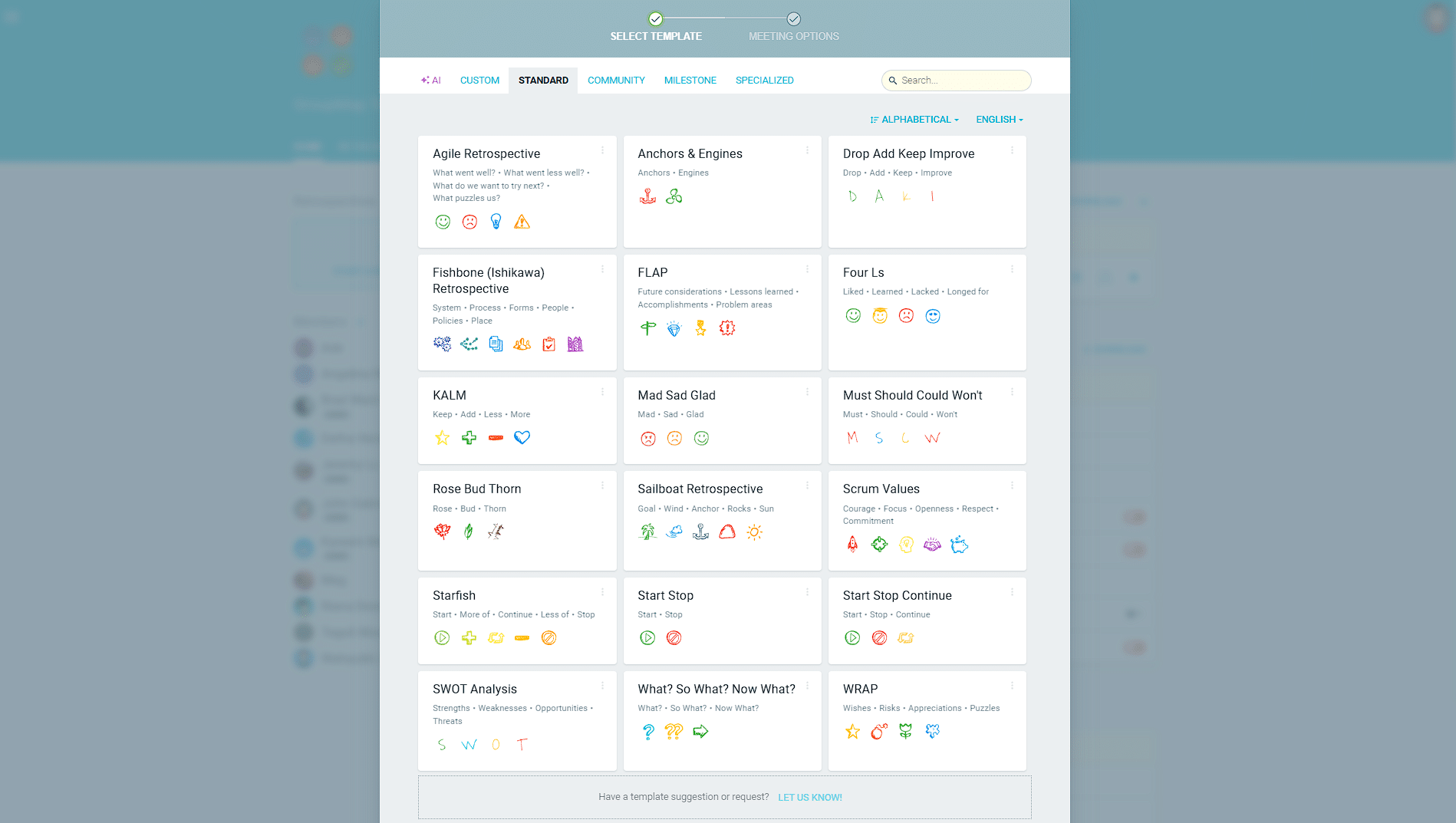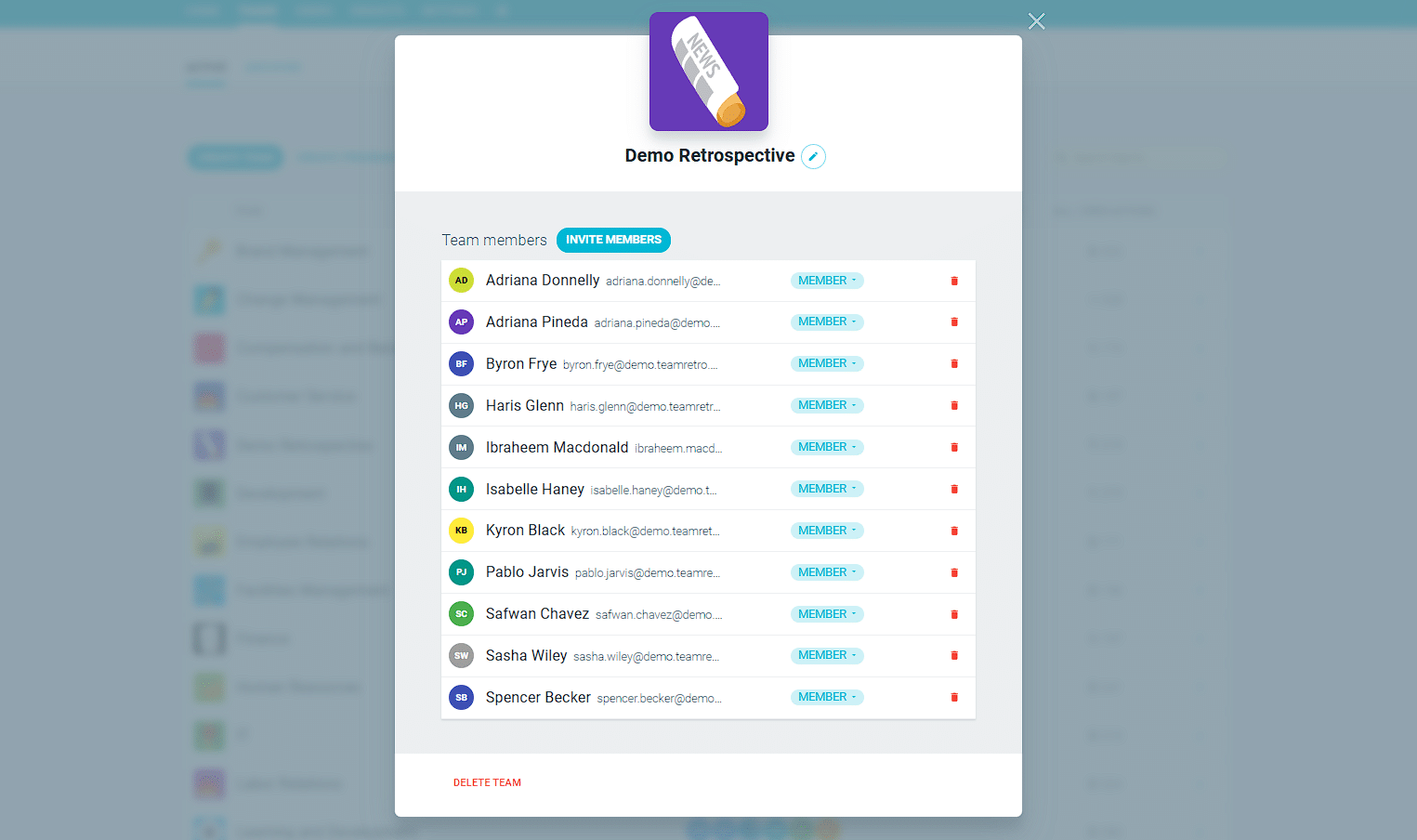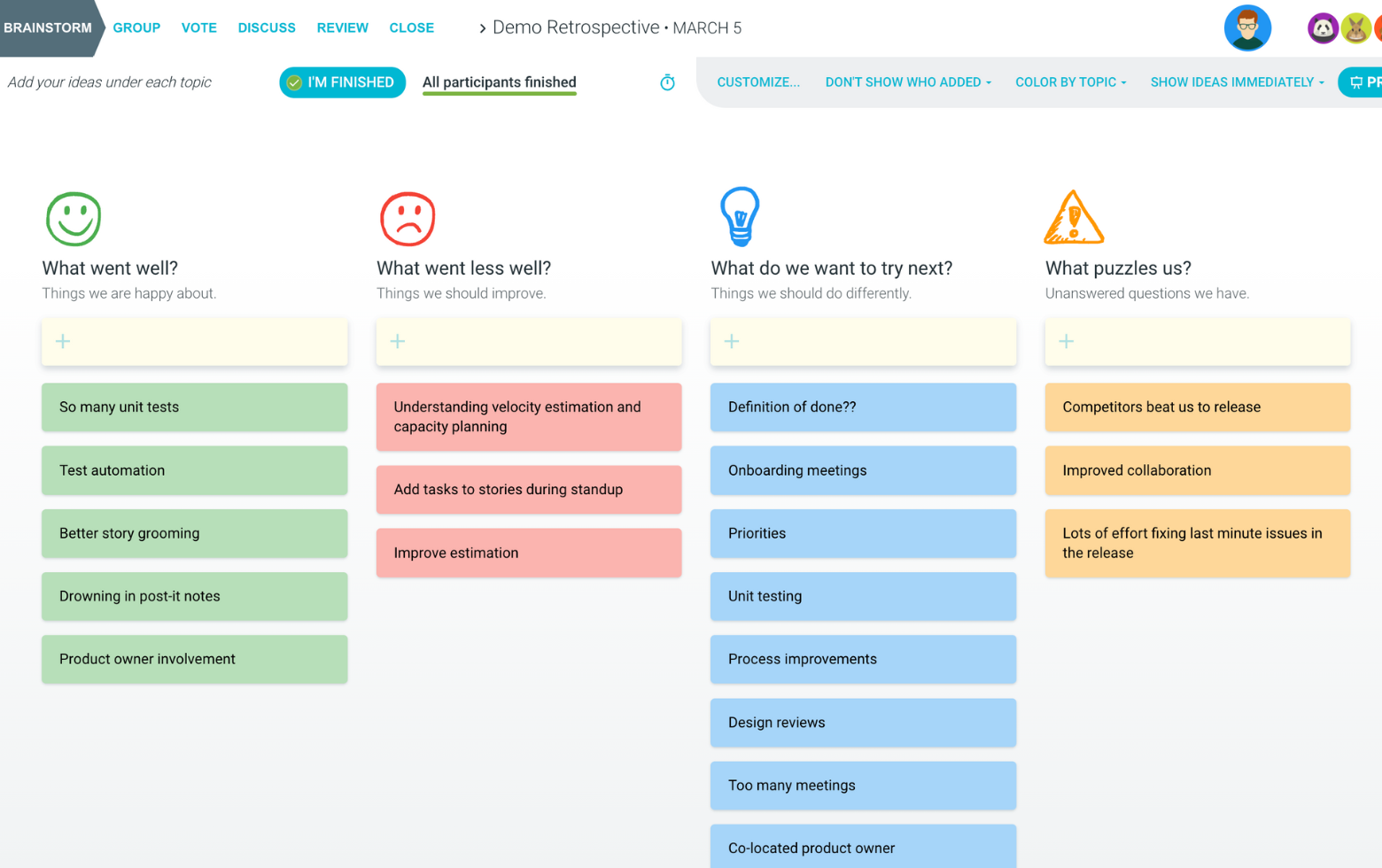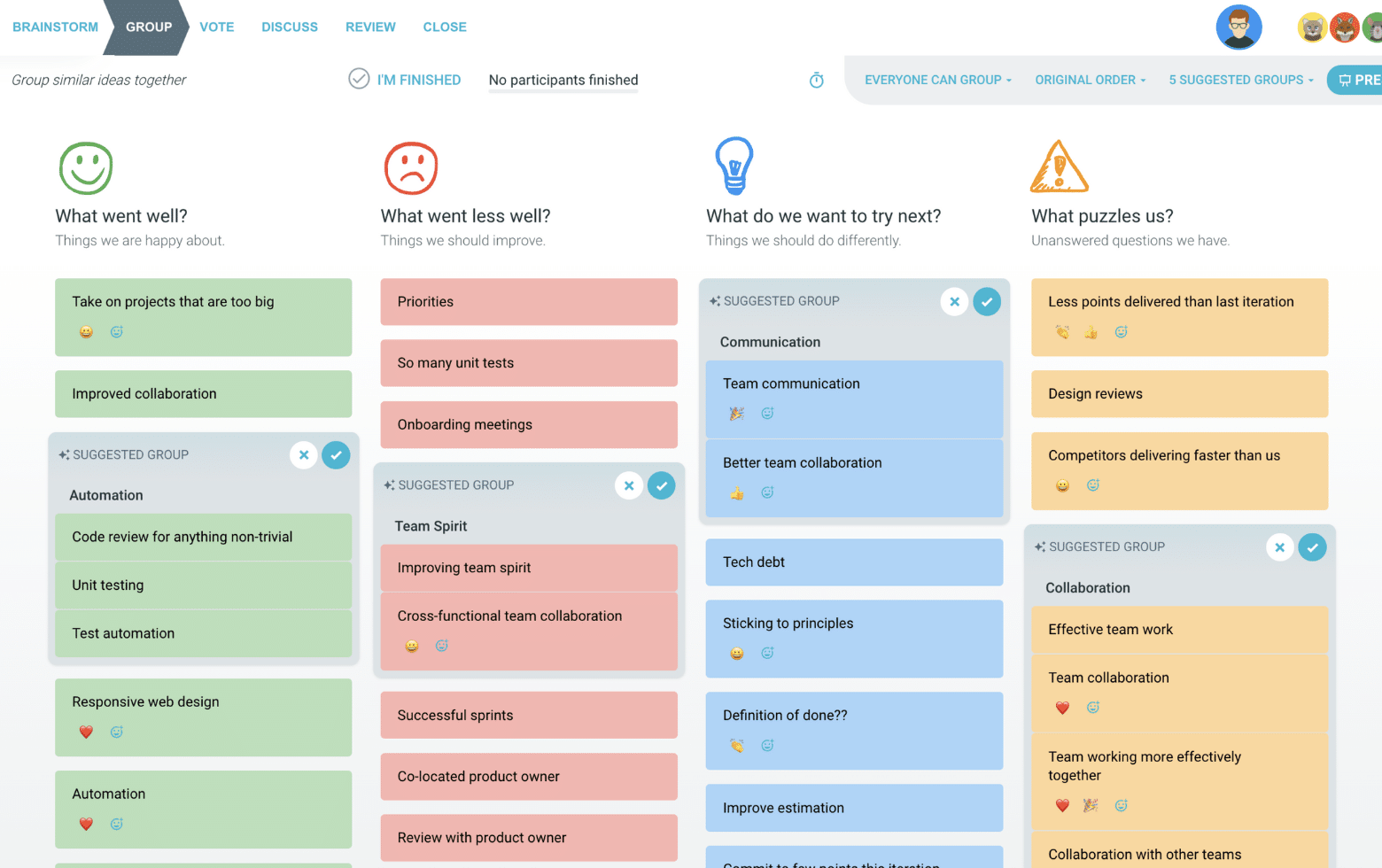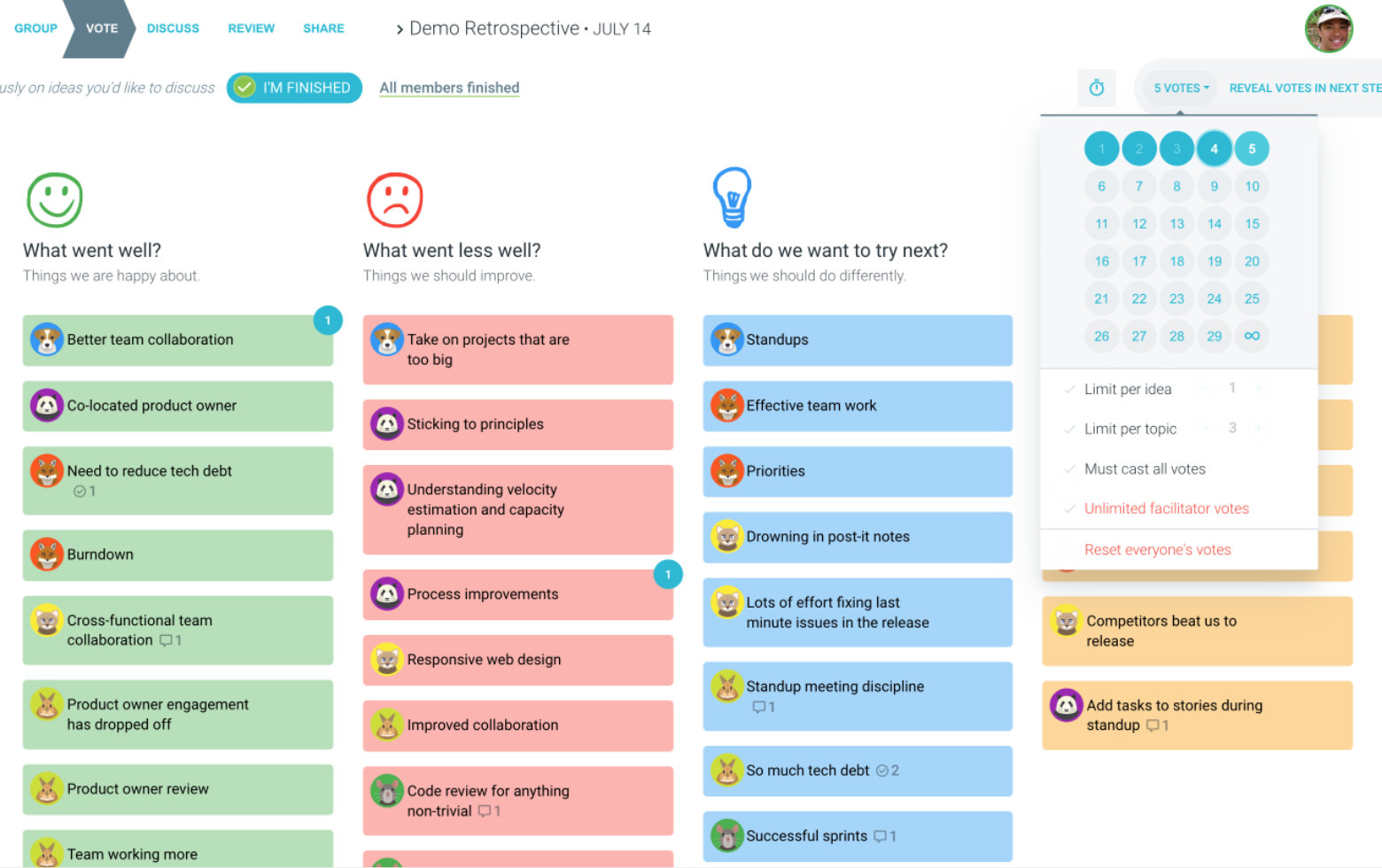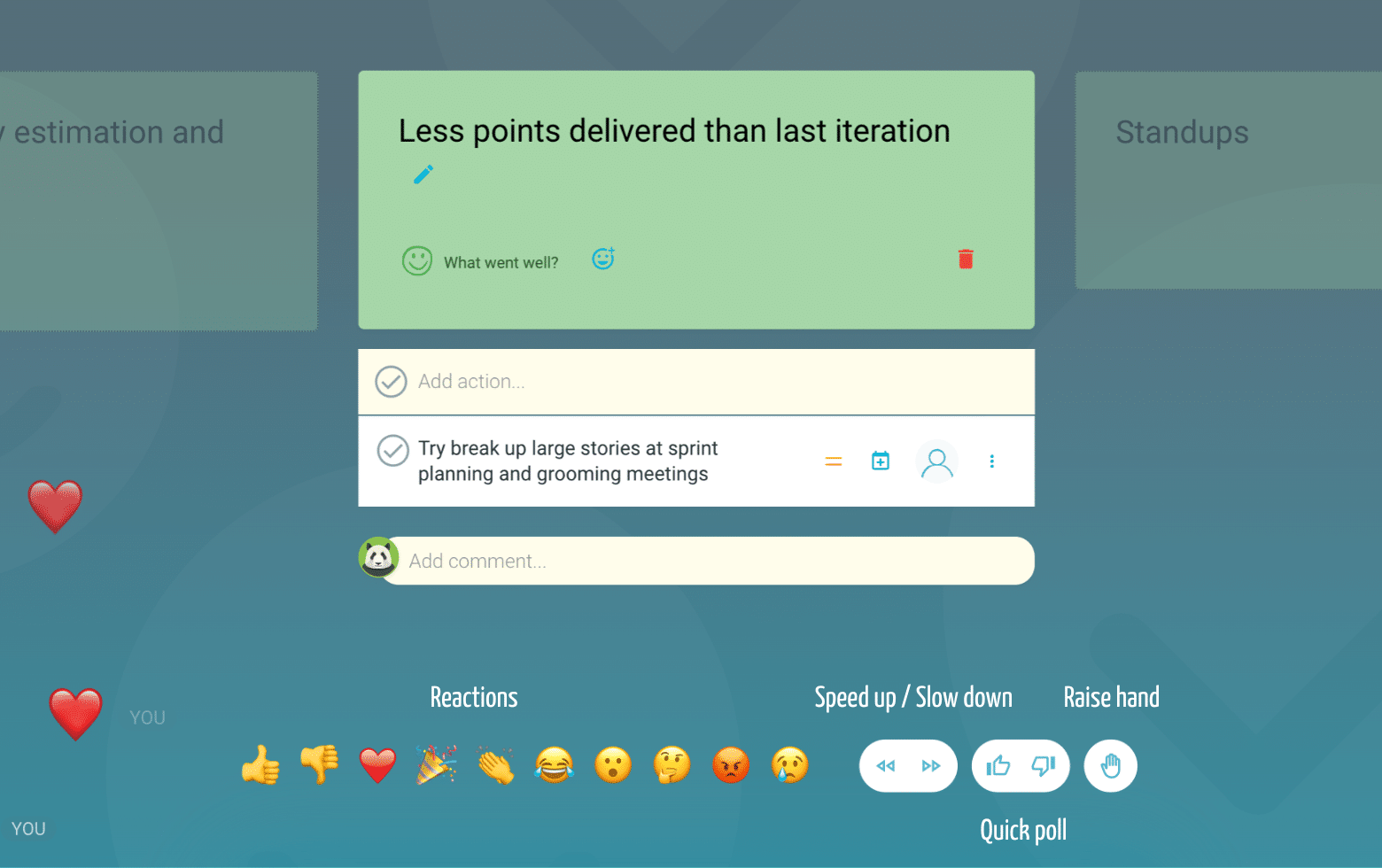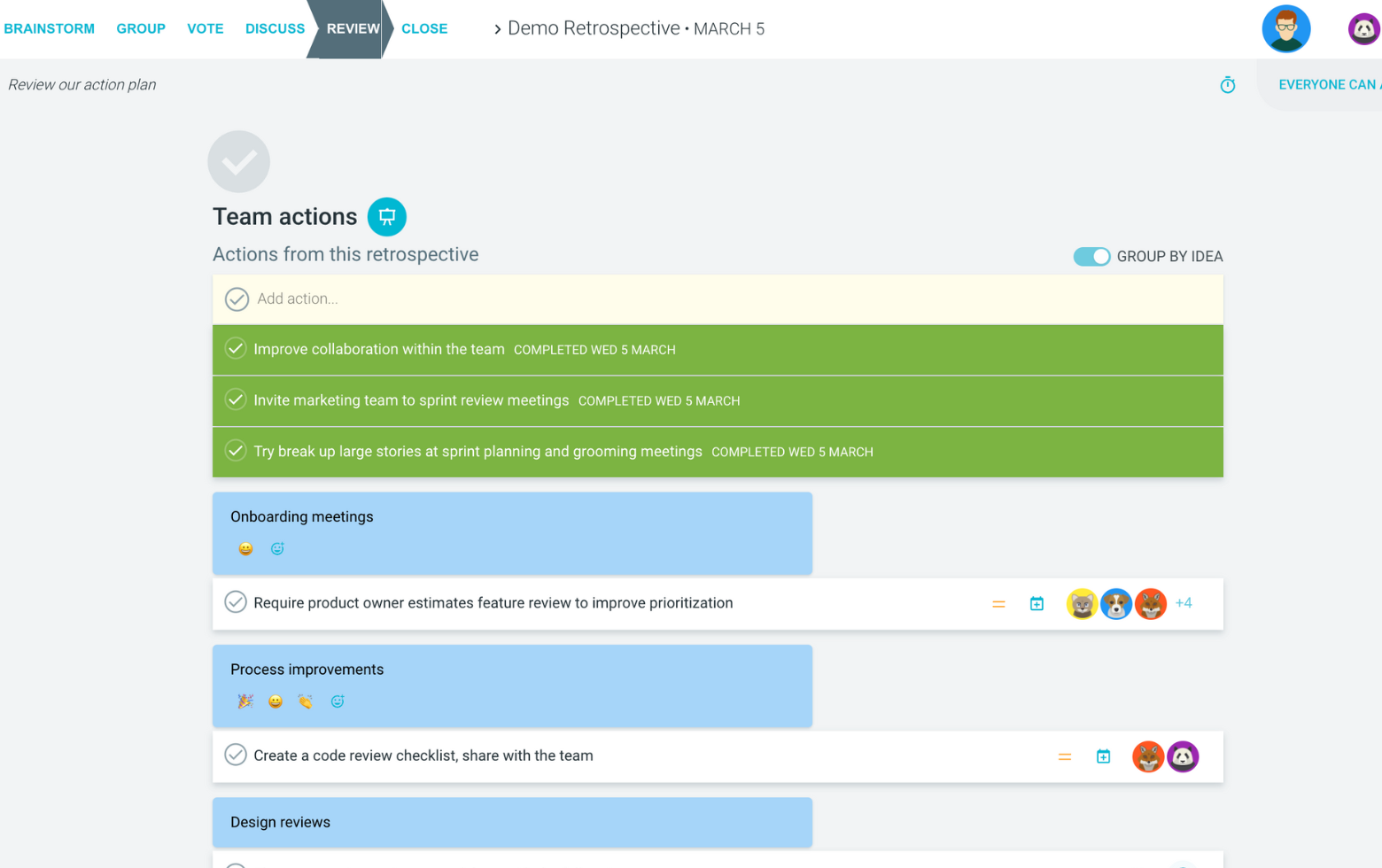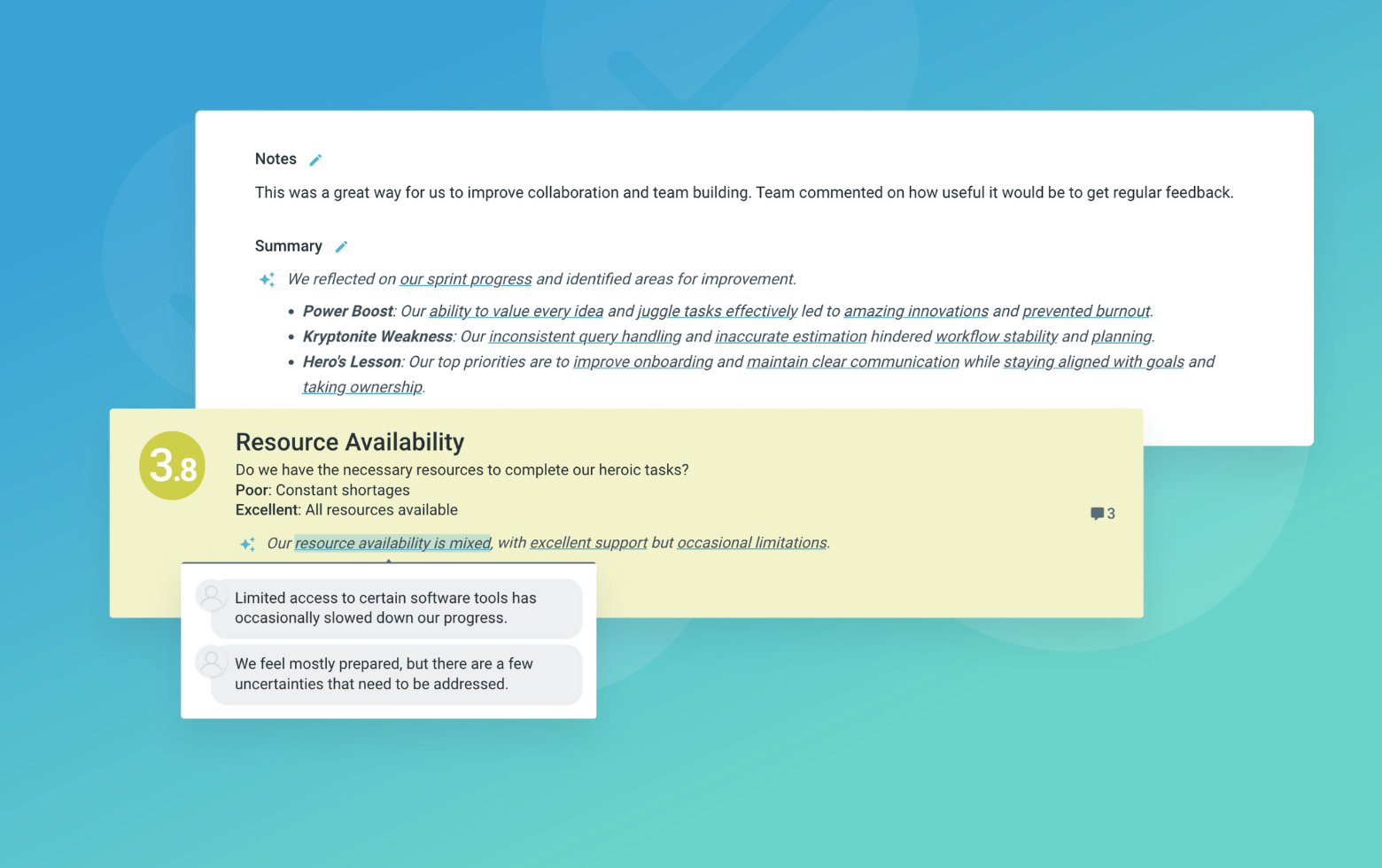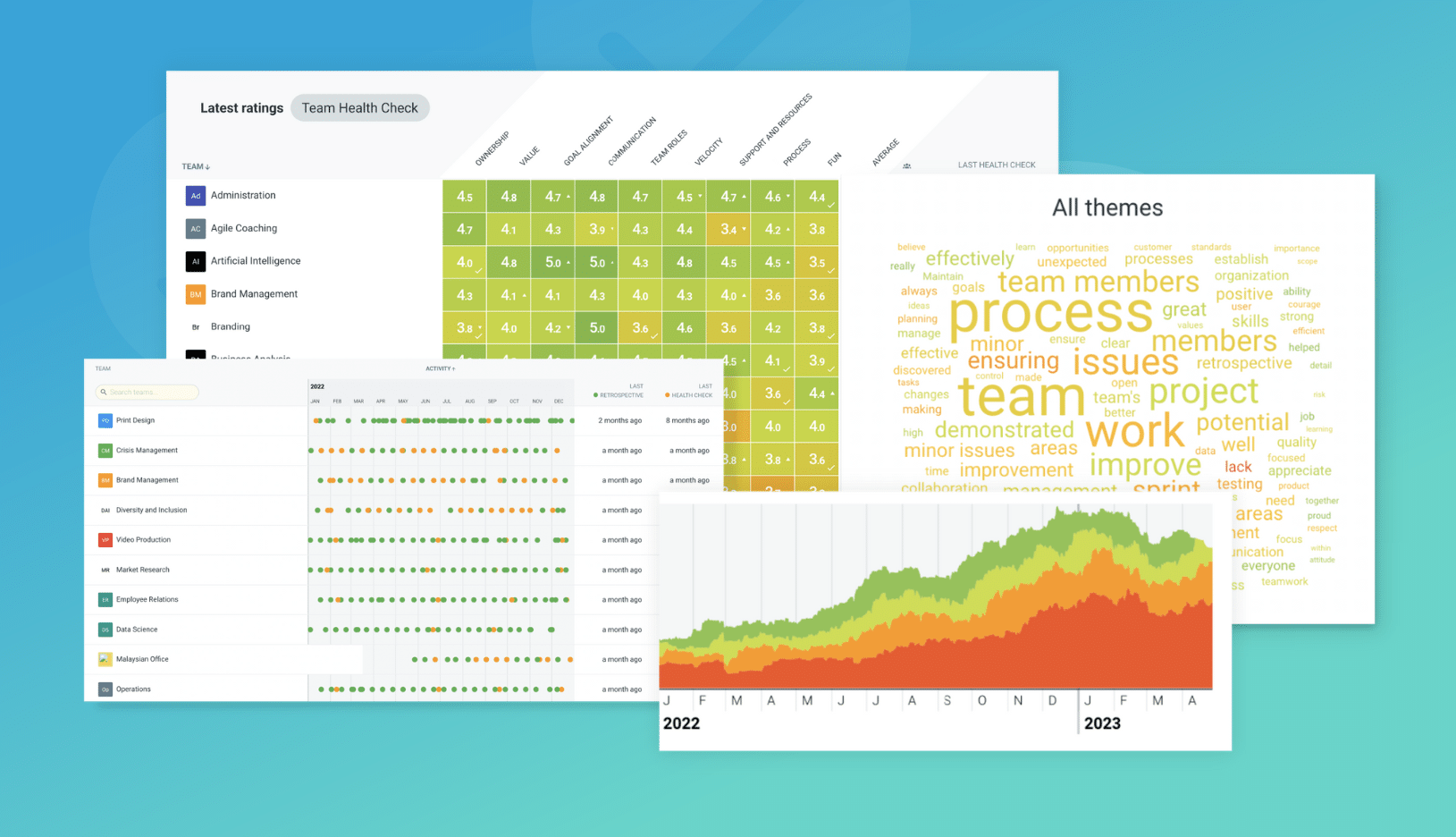What is the FLAP retrospective?
The FLAP retrospective is a blend of a futurespective and retrospective that takes into account Future Considerations, Lessons Learned, Accomplishments and Problem Areas that should be taken into the next sprint. It can be a fun and alternative way to engage the team in order to identify which risks and relevant action items.
As good practice, remember to set the stage and ensure that people are reminded that this is not a process of blame, but for identifying potential areas for change. If you have run this retrospective method several times before, you should see greater fidelity of ideas. If there are recurring items, this should be treated as a red flag.
Key components of a FLAP retrospective activity
Alternative options to try in your FLAP retrospective
- Consider colour coding the notes into specific categories such as process and practices, technology and tools, Scope and schedule, and People and staffing. This can visually and quickly help the team identify if there is a common underlying theme that can be further discussed.
- Future considerations is sometimes also know as future directions so you can use this space to identify areas of innovation, change and experiments that the team may want to try.
- Ideas in the accomplishment section are great ways to give kudos and acknowledge effort.
- You don’t have to stick with the FLAP acronym in terms of order of questioning. It might be worth kicking the meeting off in a more positive framework by starting with accomplishments first. Then share lessons learned and problem areas before moving on to future considerations. This has the effect of ending the meeting with a future forward mind set.

Suggested icebreaker questions for FLAP retrospectives
- When it comes to navigating the future, what’s one thing you always keep in mind?
- What key life lessons have you learnt that have helped to shape who you are today?
- Grace Murray Hopper, a U.S. Navy Rear Admiral and pioneering computer scientist, helped popularize the notion that it’s better to ‘ask for forgiveness’ than to ‘ask for permission’. To what extent do you agree or disagree?
Retro Rehearsal
Invite your team to rehearse the retro referencing this cooking attempt.
Ideas and tips for your FLAP retrospectives
- Kick things off with an icebreaker. Either use those above or give this icebreaker generator a go.
- Using a timer, you can Timebox discussions. This will keep the conversation on track and the retrospective on course.
- Give people “silent time” to write, read and respond to what is being presented. It might just be a minute that can make all the difference.
- Use the way the team votes to manage culture. You’ll get interesting insights when people vote individually. The last thing you want is the sheep mentality where people simply follow what has already been done.
- Keep your team agreements in view during your retrospective. Remember you can add to them at any time.
- In face to face meetings, doing things digitally allows you to collect ideas, vote and comment anonymously, and saves manual collation. If running your meeting digitally, use a video conferencing tool to give that personal touch.
- Rotate the role of facilitator. Changing the role can break the routine.
How to run a FLAP retrospective in TeamRetro
Start Your Session in a Click
Log into TeamRetro and choose your template. Customise questions and the workflow to create your perfect retro for your team.
Create Your Team Easily – No Separate Accounts Needed
Brainstorm Individually – Free From Bias
Smart Grouping for Faster Insights
Fair, Flexible, and Fast Voting
Engage, React, and Capture Key Insights
Walk your team through ideas one by one with Presentation Mode. Stay in sync, spark real-time discussions, and capture feedback with comments, live reactions, and polls—all in one place.
Turn Ideas Into Action
Propose next steps with team buy-in, get AI-powered action suggestions, and keep everything in one place. Committed actions sync to your personal dashboard and integrate with your workflow tools—keeping you on track.
Save, Share, and Stay on Track
Get quick AI-powered summaries, add facilitator notes, and store retrospectives in your library for easy access. Schedule your next session and track published actions to keep your team accountable at the next retro.
Turn Team Data into Actionable Insights
Uncover trends, common themes, and key engagement metrics at a glance. Track sentiment shifts, analyze conversations, and monitor completed actions to drive continuous improvement.
